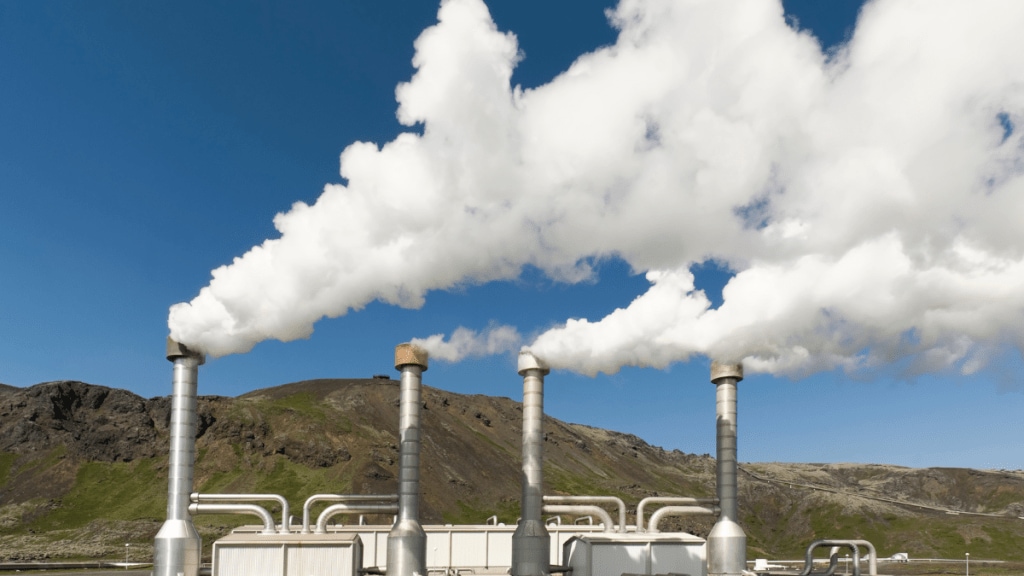By Aasheerwad Dwivedi & Aditya Sinha, Respectively assistant professor, FMS Delhi University & author on macroeconomic & geopolitical issues
India’s first National Policy on Geothermal Energy, released in September, promises to tap the vast stores of heat beneath the earth’s surface to power homes, factories, and farms. It is a bold move. Geothermal is renewable, stable, and free from the intermittency of solar and wind. But a closer look at both the science and the numbers suggests that India’s hopes must be tempered by geological reality and economic risk.
“Geothermal” is not one thing; there are layers to the resource which can be categorised as follows:
Shallow heat (a few metres deep) can be tapped by ground-source heat pumps, which heat buildings in winter and cool them in summer by exploiting the relatively stable underground temperature. These systems are mature, widely used in parts of Europe, China, and the US.
Medium-depth heat (hundreds of metres down, 40-60°C) can supply district heating, greenhouses, aquaculture, and industrial drying. Iceland and Turkey have built thriving direct-use industries on such resources. Deep, high-enthalpy heat (kilometres underground, >100°C) is what powers turbines to make electricity. But this is geologically rare, mostly along tectonic plate edges like the “Ring of Fire”.
Globally, the split is stark: Despite abundant subsurface heat, geothermal electricity constitutes just 0.3% of the world’s power; even in the US, which leads with a 3.7-gigawatt installed capacity, geothermal supplies less than 1% of national electricity.
Here is where caution enters. The Geological Survey of India has mapped 381 hot springs and 10 “geothermal provinces”, but these are mostly low- to medium-enthalpy surface temperatures, often under 90°C. That is fine for bathing and direct heating but nowhere near the >150°C needed for cost-effective power generation.
Compare this with Kenya or Iceland, where accessible steam fields exceed 200°C, or California’s Geysers, the world’s largest geothermal complex. India’s hotspots—Ladakh, Himachal Pradesh, and parts of Gujarat—are scattered, often remote, and frequently located in fragile Himalayan ecosystems or seismically sensitive zones. Put plainly, India is not sitting on vast, easy-to-tap steam reservoirs. Even optimistic internal assessments suggest that only 10-20% of mapped sites might ever yield electricity-grade heat, and at a very small scale.
Geothermal’s economics are another red flag. While lifetime electricity costs can be competitive once a plant is running, 70-80% of project cost involves upfront drilling and testing. Developers may sink multiple wells before finding a viable resource. Globally, this exploration risk—“dry holes”—is the single biggest barrier to scaling geothermal power.
Unlike solar and wind, where costs have fallen sharply through mass production, geothermal shows no clear learning curve. Each site is bespoke and expensive. Technologies like enhanced geothermal systems (EGS)—essentially fracking hot rocks to create reservoirs—could one day unlock deeper resources. But EGS remains experimental and can induce earthquakes; a South Korean project triggered a damaging quake in 2017. Betting heavily on it now would be premature.
India’s new geothermal policy deserves credit for finally recognising these realities and expanding beyond electricity to include direct heat uses: tax holidays, import duty exemptions, and 100% foreign direct investment aim to attract investment across applications. But the document is thin on prioritisation and sequencing.
By listing power generation alongside district heating, agriculture, and tourism without clear differentiation, the policy risks overpromising and under-delivering. There is little guidance on how India will de-risk early drilling—the single biggest cost barrier—or how environmental safeguards will work in sensitive Himalayan sites. The call for “single-window clearances” may speed permitting but risks short-circuiting rigorous geotechnical and ecological review.
And while pilot projects are planned, they appear small, scattered, and underfunded compared with the billions poured into solar parks or wind corridors. Without a strong pipeline of well-characterised sites, private investors are unlikely to step in, fiscal incentives or not.
A more credible strategy would lean into what the geology supports and what the economy needs. First, prioritise shallow and medium-depth heat. Expand ground-source heat pumps in urban cooling, especially as India’s cooling demand is set to treble by 2050. Use medium-depth wells for industrial clusters, greenhouses, and cold storage in geologically suitable pockets. This aligns with India’s agriculture and rural development goals, and avoids risky deep drilling. Second, fund a national subsurface data initiative similar to the US National Geothermal Data System. This reduces exploration risk by giving developers reliable temperature gradients and geotechnical profiles. Third, create targeted—not blanket—incentives. Rather than broad tax holidays, offer cost-sharing for early exploration, insurance for dry wells, and long-term offtake guarantees where viable resources are proven. Fourth, support small, research-driven pilots in EGS and deep drilling but not large public bets until safety and cost are better understood.
India’s clean energy push must remain anchored in solar, wind, and storage, where cost curves and scalability are proven. Geothermal should be treated as specialised infrastructure: valuable in certain locations and uses, but not a nationwide backbone. Overhyping its electricity potential risks repeating past mistakes where policy enthusiasm outpaced ground truth, leaving stranded assets and disappointed investors.
India’s geothermal policy is a welcome step but not yet a robust road map. It gestures at every possible use from deep power plants to spa tourism without confronting that India’s resource base is modest and fragmented. The policy’s ambition would be better served by focusing tightly on low-risk, immediately usable applications while building data and expertise for deeper exploration later.
Done right, geothermal can quietly decarbonise heating and cooling, strengthen rural energy systems, and add resilience to a renewable grid. Done poorly, it could become another well-meaning but underperforming programme. The heat is there; the challenge is to use it wisely.

